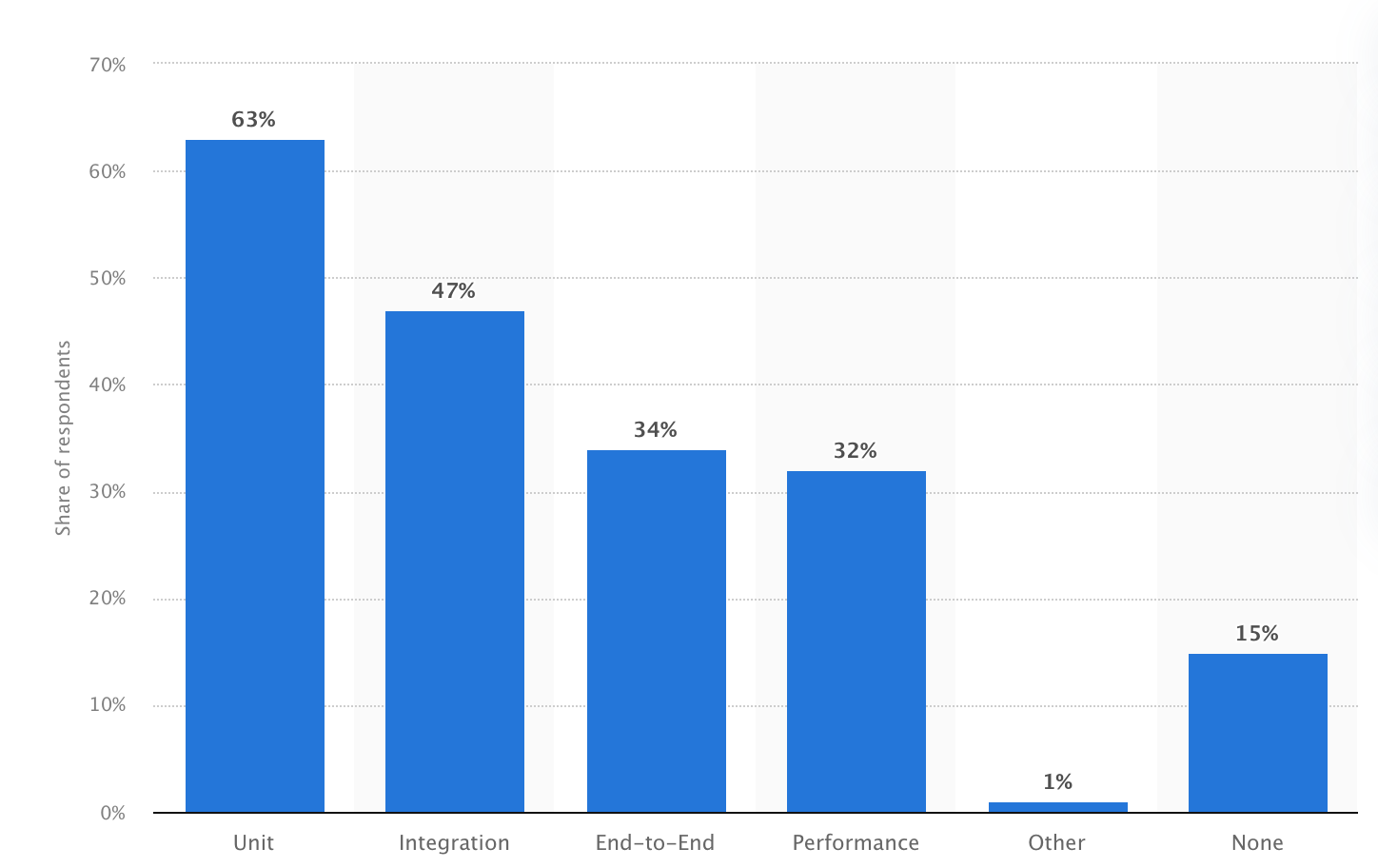According to 63% of respondents around the globe, unit testing was the primary type of testing used in projects in 2023, and today it is rightfully an integral part of software development, ascertaining that individual components of an application work as envisioned.

But when it comes to testing services, QA engineers repeatedly face the same dilemma: is striving for 100% unit test code coverage a worthwhile goal, or does it lead to inefficiencies and a waste of resources?
What Is Code Coverage: Meaning and Explanation
Code coverage tools examine which parts of the code are getting tested and which ones are still being disregarded. Commonly, there are several types of code coverage to give a different angle on how well the tests are wrapping the code.
- Statement Coverage: Statement type inspects whether every line of code has been executed by a test.
- Branch Coverage: Branch coverage, in turn, looks at whether all possible paths (e.g., if/else statements) have been tested.
- Condition Coverage: Condition type assures that all logical conditions (e.g., true/false conditions in code) are tested for every probable outcome.
What Role Does Code Coverage Play in Unit Testing?
All in all, unit testing proves that individual parts of the code (such as functions or methods) are functioning as wished. It helps see bugs and diminishes the likelihood of things dying later in development.

Unit tests also provide grounds for maintaining code quality, especially when engineers add new components or make amendments.
Levels of Unit Test Code Coverage
In most projects, developers aim for 70% to 80% code coverage. This range typically demonstrates that the code is being tested pretty exhaustively, without putting in disproportionate or even absurd effort.
And even though high coverage is commonly a nice goal, getting all the way to 100% isn’t always sensible, especially for larger or more complex applications.
In practice, the right coverage rate actually depends on the project’s complexness, risks, and the industry you’re making software for.
The Case Where 100% Code Coverage Guarantees Effective Testing
Going for 100% code coverage sometimes seems like overkill, but yet there are some cases where it is not just a striving for perfection.
For example, with 100% code coverage, every single line of code gets tested, which adds to spotting edge cases, unreachable code, and hidden bugs that might otherwise slip unnoticed.
When all code is touched by tests, developers can feel more positive about their alterations and that they won’t provoke unpleasant problems, especially when several developers work on the same codebase.
The sector for which the software is being developed also plays an important role. In highly regulated fields, such as medical care, finance, and aviation, high or full coverage is often imposed by industry standards.
For example, in medical devices or aerospace systems, the consequences of failure are so ruining that itemized software testing is a pure obligation. In these situations, high coverage isn’t just about excellence—it’s a must for harmlessness and safety.
Why Achieving 100% Code Coverage Is Not Always a Way Out
Despite all the good sides, 100% code coverage is not anyway the best goal. For one, it often brings diminishing returns.

Getting that last bit of coverage usually takes a lot of time, stress, and labor, but it doesn’t always make a visible difference in the final quality. For most projects, hitting around 80–90% is enough to prove proper testing without breaking the bank.
Another point is that full coverage can build pseudo-confidence. Just because all the code is inspected doesn’t mean the tests themselves are high-quality. Full coverage doesn’t automatically mean bug-free software.
As a final point, some code just isn’t easy to test. System calls, async code, or UI elements—they are all tough to test in isolation and may need complex setups that can be tricky to maintain.
Strategies to Maximize Testing Efficiency without 100% Coverage
Don’t chase 100% code coverage. In fact, there are nicer ways to refine your testing that save time and labor.
For example, focus your attention on portions of your code that are either high-risk or critical, rather than examining every little piece of code. These are the parts of your code where problems most probably will occur or spoil key features.
Let’s say, if you’re working on an e-commerce site, you’d want to prioritize the checkout process or payment systems, as they are the most susceptible and impactful parts of any shopping app.
Another persuasive time-saver is automated testing software. Have a look at JUnit, Selenium, and TestNG. They let you automatically run tests, so you shouldn’t do them by hand every time.
Plus, these tools can be integrated into your CI/CD pipeline and give you fast conclusions on your code every time you alter the code.
Talking about quantity, it’s smarter to set realistic, context-based coverage goals. For smaller projects or simple functions/features, you probably don’t need the same level of coverage as you would for a branched, multilayered app.
Sometimes less is more, that’s why 80–90% coverage can be a sweet spot that confirms your main functionality is well-examined.
Lastly, remember that code quality goes far beyond coverage. Focusing solely and exclusively on coverage might make you miss other no less important quality checks. For example, cyclomatic complexity, which tells you how complicated your code is, can help you spot potential problem areas before they become disastrous.
Verdict: To Chase 100% Coverage or Not
Full unit test code coverage can help build confidence in your code, but that is often not the most reasonable thing to do.

Often, the best approach is to concentrate on high-risk gaps, employ automation, and set realistic coverage expectations. At the end of the day, good quality assurance is simply a balance between test coverage with other quality metrics.
If you’re not sure what coverage goal makes sense for your product, SCAND’s QA engineers can share their expert advice. With a row of successful projects across different domains, we know how to line up reasonable testing strategies that match both product needs and budgets.












